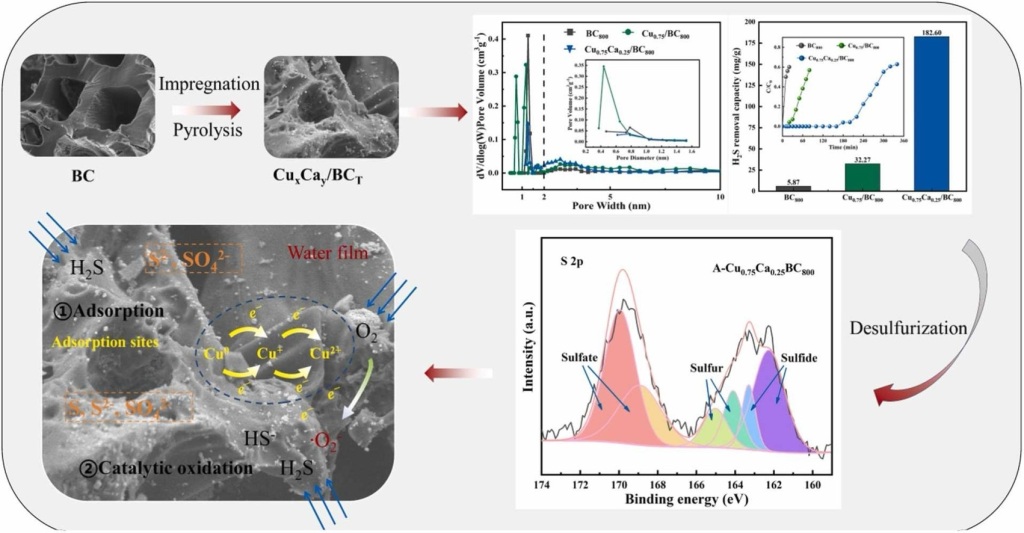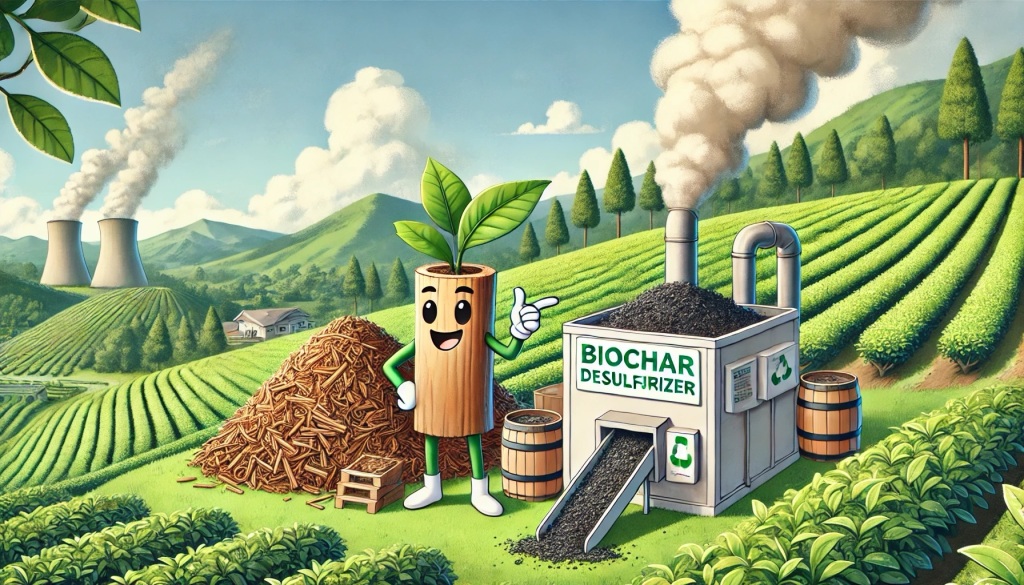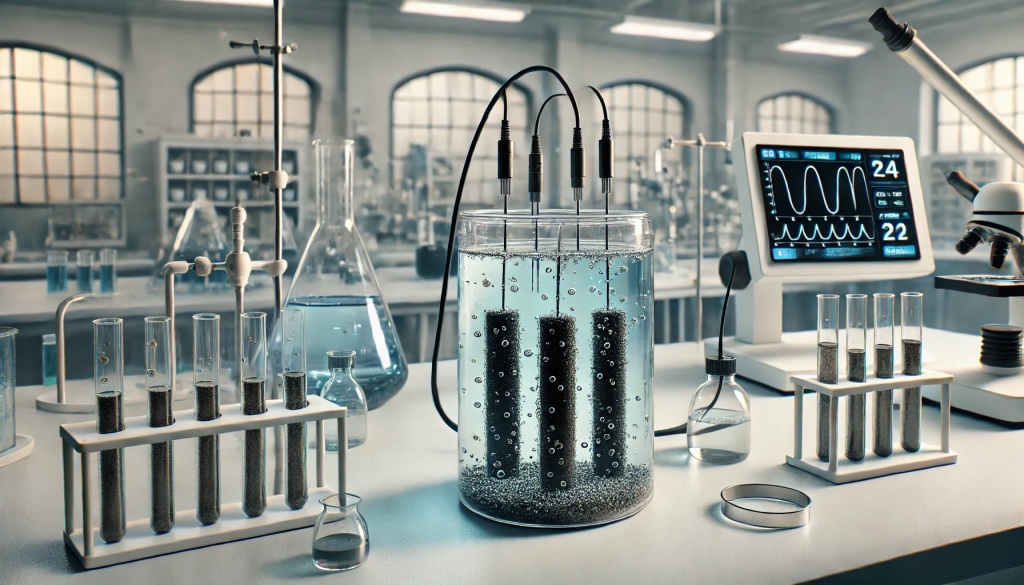
Researchers have developed an innovative desulfurizer using biochar derived from waste tea stalks and metal salts. This material, known as CuxCay/BCT, was created to effectively remove hydrogen sulfide (H2S) at room temperature. The study highlights that Cu0.75Ca0.25/BC800, an optimized version of this biochar, shows a remarkable H2S removal capacity of 182.67 mg/g. This performance is significantly better than that of inactivated biochar and copper-oxide-impregnated biochar, making it a promising solution for H2S treatment.
The desulfurization process involves both reactive adsorption and catalytic oxidation. The addition of CaCO3 increases alkaline sites on the biochar’s surface, while CuO facilitates the activation of superoxide ions (∙O2-), enhancing the oxidation of H2S. This synergistic effect is crucial for the high efficiency of the desulfurizer. Furthermore, the Cu0.75Ca0.25/BC800 demonstrated excellent reusability, retaining about 85% of its initial H2S removal capacity after seven cycles.
The creation of this biochar-based desulfurizer not only addresses the issue of H2S pollution but also promotes the high-value utilization of agricultural waste, particularly tea stalks, which are typically discarded or incinerated. This study showcases a sustainable and effective approach to environmental protection, advancing the technology for catalytic removal of H2S. The researchers aim to further enhance the properties of biochar through innovative activation methods, making it an even more potent material for malodor treatment and environmental applications.






Leave a comment